The second in my series about UNESCO sites off the beaten track takes us to the Middle East. As I have not been to the Middle East or even to any of the UNESCO sites in the Middle East, I reached out to some of my fellow bloggers for their ideas.
What you can expect in this post:
*This site uses affiliate links and I may earn a small commission when you use my links and make a purchase without incurring an additional fee yourself.
Thank you for supporting this website. See my disclaimer page for more details.
Lesser-known UNESCO sites in the Middle East
Baalbek, Lebanon
by Keri Hedrick from OurGlobetrotters.Com
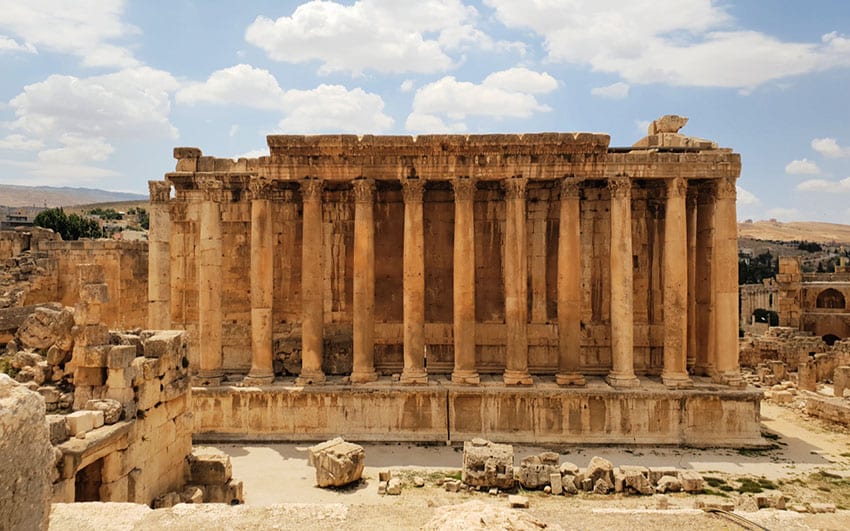
Baalbek Temple, in the Baqaa Valley of Lebanon, has origins believed to date back 11,000 years. A place of pilgrimage, it was known as Heliopolis or “Sun City” during the Hellenistic Period and it has served a religious function for centuries.
The Baalbek Temple UNESCO site actually consists of several temples, however major earthquakes over the centuries have all but destroyed most of the Temple of Jupiter, Temple of Venus, and Temple of Mercury. The Temple of Bacchus, however, remains well intact and can be explored both inside and out. It is one of the most stunning buildings we have had the opportunity to see.
Baalbek is situated only 10 miles from the Syrian border, and many foreign governments have the area surrounding Baalbek designated as amber or red zone for travellers, resulting in very few tourists at the site. Expect unspoiled views, perfect for soaking in the experience of one of the most intact and mysterious archaeological sites of the Near East. There is a small entry fee of 15,000LBP at the time we visited. There is no nearby accommodation, however, so best tackled as part of a day trip from Beirut.
YOU MIGHT ALSO LIKE: UNESCO Sites Off the Beaten Track – Europe
Wadi Rum, Jordan
by Lindsay from Step into Jordan

Wadi Rum, Jordan’s famed desert is one of the lesser-known UNESCO sites that well deserves a visit. Just an hour’s drive south of Petra, Jordan’s most well known UNESCO site, Wadi Rum offers visitors an otherworldly landscape, unlike anything that has been seen in the world! It is also one of Jordan’s protected areas.
The most popular thing to do in Wadi Rum is to ride the back of a 4×4 into the desert with a local bedouin. After climbing sand dunes, drinking sweet Bedouin tea, seeing Nabataen carvings and learning a bit about Lawrence of Arabia, head into one of the many camps in Wadi Rum to spend the night in a bedouin tent. If luxury is what you are after, Wadi Rum delivers with some of the most luxurious tents in the world, but if you are looking for an authentic rustic experience, there are camps to deliver on that as well.
Consider walking a few minutes from camp to gaze at the Milky Way without any light pollution. Also, find yourself a great sunset spot to watch the sun dip below the clouds. A camel ride in the desert is also an authentic experience to have in Wadi Rum.
Fees for Wadi Rum Protected area are JD 5 (about USD7) and Jeep tours start at JD 35 (USD50). Camping rates vary depending on the camp. Expect to spend a half-day and overnight to really appreciate the beauty and vastness of Wadi Rum. Wadi Rum is best accessed with a rental car or as part of a Jordan tour.
Naqs-e Jahan Square, Iran
by Ellis from Backpack Adventures
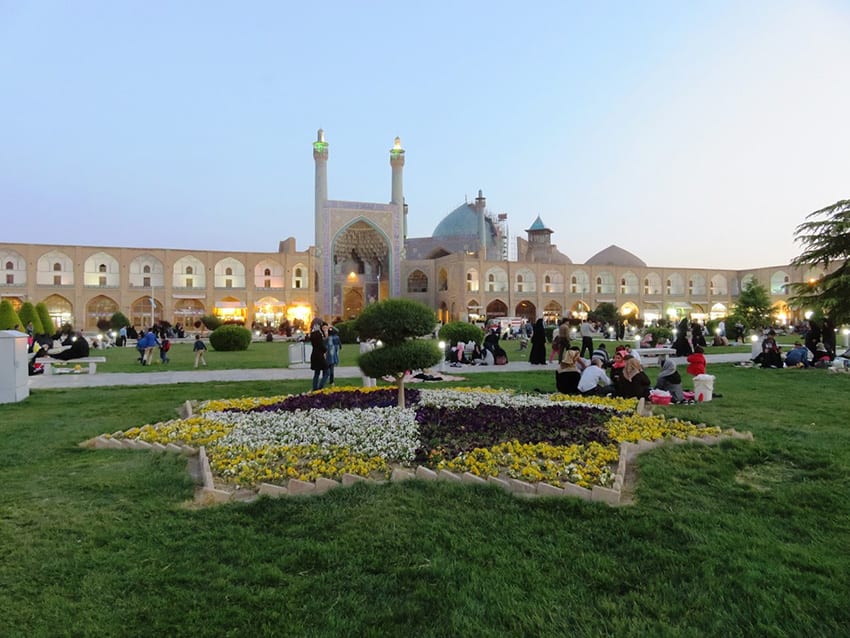
Isfahan is one of the most historical cities in Iran and still the most beautiful one in the country. The main attraction is the Naqs-e Jahan square that is a UNESCO World Heritage site. This royal square was built at the end of the 16th century and was at the heart of the city. The square is lined with some of the most important historical buildings like the Shah mosque, the Lotfollah Mosque, the Ali Qapu Palace and the bazaar.
There is a Persian saying that states that if you have seen the Naqs-e Jahan square you have seen half of the world. The square is still a magnificent sight and the blue tile work of the mosques leaves you in awe. The square has many stories to tell about the importance of Isfahan as a major city on the ancient Silk road. More than once Isfahan was the capital of the Persian empire.
The Naqs-e Jahan square was a trading hub where goods and ideas were exchanged between people. It was a cosmopolitan city at that time with Turks, Chinese, Indians, and Armenians. The square was home to some of the best merchants in the country that were always busy negotiating the best prices for the goods that arrived from all over the world. To entertain the traders and merchants there were also puppet players, acrobats and a large number of coffee shops and restaurants.
The Naqs-e Jahan square is still the economic and cultural heart of the city. People still come here for entertainment and in the evening the square is full of families having a picnic. The ancient imperial bazaar north of the square is still home to some of the best merchants and crafts in the country. The Naqs-e Jahan square is the best place to buy souvenirs like the famous Iranian carpets and ceramics.
The square is also still a place where you can hang out in one of the teahouses or indulge in Iranian food in one of the restaurants. To enter the square is free, but if you want to enter one of the historical monuments like the Shah mosque or the Lotfollah mosque you need to pay a small entrance fee. It is totally worth it though and a visit to these buildings really gives you the feeling you are travelling back in time to the days of the ancient Silk Road.
YOU MIGHT ALSO LIKE: UNESCO Sites Off the Beaten Track – Africa
Masada Fortress, Israel
by Cat from Walk My World
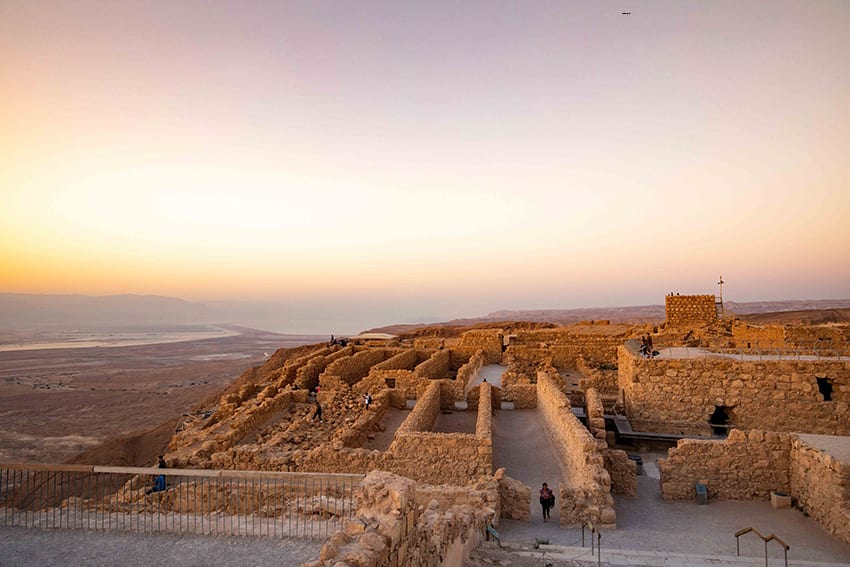
Situated at the world-famous Dead Sea in the south of Israel, Masada Fortress has a long history that makes it worthy of its UNESCO status. It is one of the most significant archaeological sites in Israel and the sheer achievement of building such a large fortress on top of an incredibly tall cliff is remarkable – even more so when you find out that this was built by King Herod in 30 BC.
Nowadays you can wander the remains of this huge complex that sits 400 metres above sea level. Some of the most notable features you can see are the palace, roman baths and mosaics. To get to the fortress you can either take the scenic cable car up the mountain or join the adventurous who arrive before sunrise to hike the Snake Path to the top. The path Is steep but walking under the stars and then watching the Dead Sea glow at sunrise is well worth the effort. It takes between 40 minutes and an hour to reach the top and it is definitely one of the best hikes in Israel.
Entry to Masada costs 29 Shekels ($8 USD) and the cable car costs 75 Shekels ($21 USD). If you want to take the Snake Path, ensure you arrive at the Eastern Car Park at least one hour before sunrise to make sure you make it to the top in time. If you don’t mind missing sunrise the Snake Path remains open until 10 am. Masada is a 15-minute drive from Ein Bokek in the Dead Sea and approximately 2.5 hours from Tel Aviv.
Persepolis, Iran
By Bridget at The Flashpacker

A testament to the glory days of the mighty Achaemenid Empire, Persepolis is one of the world’s greatest ancient cities, and one of those places that sets your imagination on fire.
Sitting in the shadow of Kuh-e-Rahmat (Mountain of Mercy) in south-western Iran, this sprawling and magnificent complex was founded by Darius the Great in 518 BC. Persepolis was built to impress as the Achaemenid Empire’s spring capital, housing the palace of Darius and of his successors, Xerxes and Artaxerxes.
Judging it to have outstanding universal value, UNESCO added Persepolis in Iran to its list of World Heritage sites in 1979. It is famous for its monumental Grand Stairway, hewn from massive blocks of stone, and for its detailed bas reliefs in the Palace of 100 Columns. Better still are the exquisite carvings in the Apadana (Audience / Throne Hall), depicting kings and courtiers from tributary nations.
Apart from its scale, what is striking about Persepolis is how well preserved it is. Its towering columns and bas reliefs and have survived the millennia and you can get a true sense of how imposing and how opulent the city would have like in the days of the Achaemenid Empire.
The admission cost for Persepolis for non-Iranian visitors is 200,000 Rials (6 USD).
YOU MIGHT ALSO LIKE: UNESCO Sites Off the Beaten Track – Asia
The Walled City of Baku, Maiden Tower and the Shirvinshah’s Palace, Azerbaijan
by Jeff from Our Passion For Travel
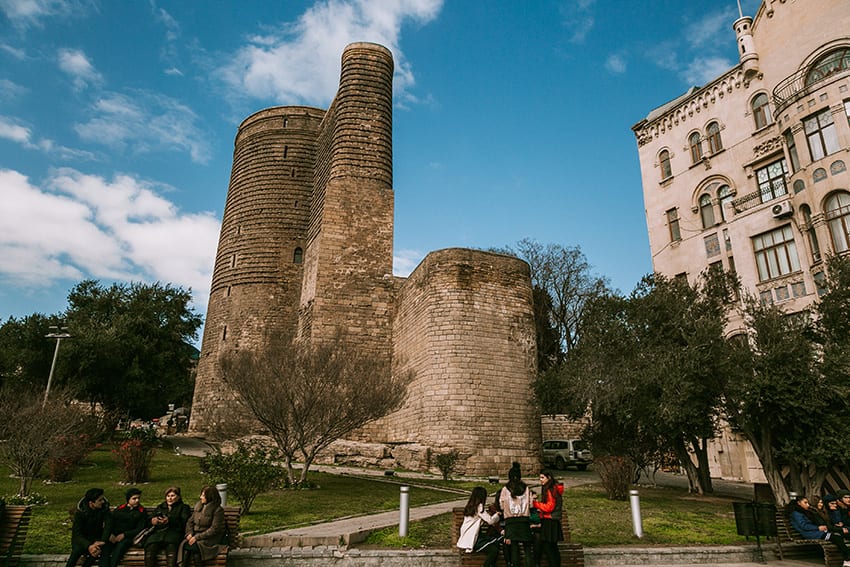
The turn of the millennium saw the Walled City of Baku with the Shirvanshah’s Palace and Maiden Tower admitted to the UNESCO World Heritage list. Baku’s old city has a collection of sites from a range of eras and backgrounds. Visiting these sights is an absolute must-do on a visit to Baku.
There is much debate amongst Azerbaijanis and historians alike as to the dating of these sites. Some say parts of the Maiden Tower have been there since the 7th-6th centuries BC, others suggest the 12th century AD. Whatever the case, it’s an impressive tower and is the ancient symbol of the city of Baku.
The Shirvanshah’s Palace is a marvellous relic from around the 15th century. The Palace was home to the Shirvinshah’s, the rulers of the area in the Middle Ages. Inside the Palace, you’ll find the main reception hall, burial vaults, a mausoleum and a mosque. There are also a number of exhibits on display. The Palace also has some excellent views over the Caspian Sea and modern-day Baku as well.
The walled city plays host to a dynamic blend of cultural influence. Baku was a common centre ground for many coming between the East and West. The city itself takes influence from Zoroastrian, Persian, Arabic, Ottoman and Russian cultures. Speak to any local and they’ll tell you that they’re uniquely Azerbaijani, which effectively means a little bit of everything. This is present throughout the city which feels like it was the hub of multi-culturalism in the centuries that have passed.
Despite being the centre of the old world, today Baku is a little more challenging to get to. The Middle East airlines can get you there directly. Alternatively, pairing a visit with Georgia can be an easier way to see the beauty of the Caucasus.
Petra, Jordan
by Ashlea from Dashing Around The World
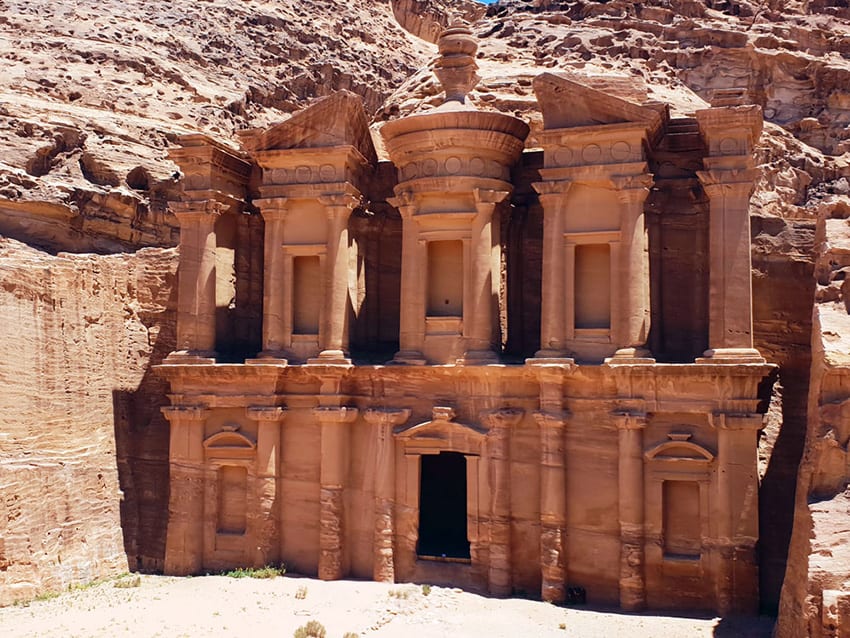
The ancient Nabataean city of Petra in Jordan is probably the most well-known UNESCO site in the Middle East outside of the Great Pyramids, however, there is much more to see at Petra than the famous Siq Trail and Treasury.
While it’s not known exactly when Petra was built, the capital of the Nabataean Empire was a thriving trade centre between 400 BC and 106 AD, before being annexed by the Roman Empire and later the Byzantine Empire. The city was abandoned during the 7th century and remained forgotten, except by the nomadic Bedouins, until the 19th century.
The Petra Archaeological Park is a huge 2,640 acres, and with a few exceptions allows visitors to explore as they like.
One of the best ways to avoid the crowds is to hike up the steep 850-ish steps to the impressive Monastery. The façade is 47m wide by 48.3m high, making it larger than the famous Treasury, and one of the most impressive monuments in Petra.
Located 9 km north of Petra within the Petra Archaeological Park is Siq Al-Barid. It’s often referred to as Little Petra due to its similarities with the main Petra site. Siq Al-Barid is believed to have been inhabited from 7200 to 6500 BC, making it one of the first settled villages in human history! Not many visitors make it out to Little Petra, but it is one of the most interesting sites to explore for the adventurous traveller.
Entrance costs 50, 55 or 60 JD ($70 – $85) for 1, 2 or 3 days visiting the Petra Archaeological Park (check out the Jordan Pass for a discount). We recommend spending at least 2 days exploring Petra!
YOU MIGHT ALSO LIKE: UNESCO Sites Off the Beaten Track – The Americas & The Caribbean
Byblos, Lebanon
by Liza from Tripsget Travel Blog

Byblos is a wonderful town in Lebanon, about 45 minutes driving from Beirut. When you’re driving to Byblos, you don’t feel like you’re leaving Beirut – so many people live on the coast of Lebanon. However, Byblos can’t be more different from Beirut. While Beirut is loud, modern and vibrant, Byblos is old, traditional and absolutely charming. Byblos is one of the oldest continuously inhabited cities in the world and it’s protected by UNESCO.
While the population of Byblos is only about 40,000 people, people have been living there since at least 7000 BC. What is also surprising is that the majority of the residents are Christians and you can find Orthodox churches around every corner in Byblos.
The best thing to do in Byblos is to visit its old town and Old Soul and walk around the narrow streets of the market in Byblos. Head to the port to see charming fishermen boats and also take a look at the Byblos citadel. There are plenty of shops where you can buy local crafts and souvenirs, try traditional coffee and eat.
For some mysterious reason, most of the restaurants in Byblos serve Italian food, however, we managed to find a couple of nice Lebanese restaurants on Jbeil street. Byblos is also one of the most photogenic locations in Lebanon, so it’s definitely worth visiting.
Don’t forget to pin this article so you can come back to it later
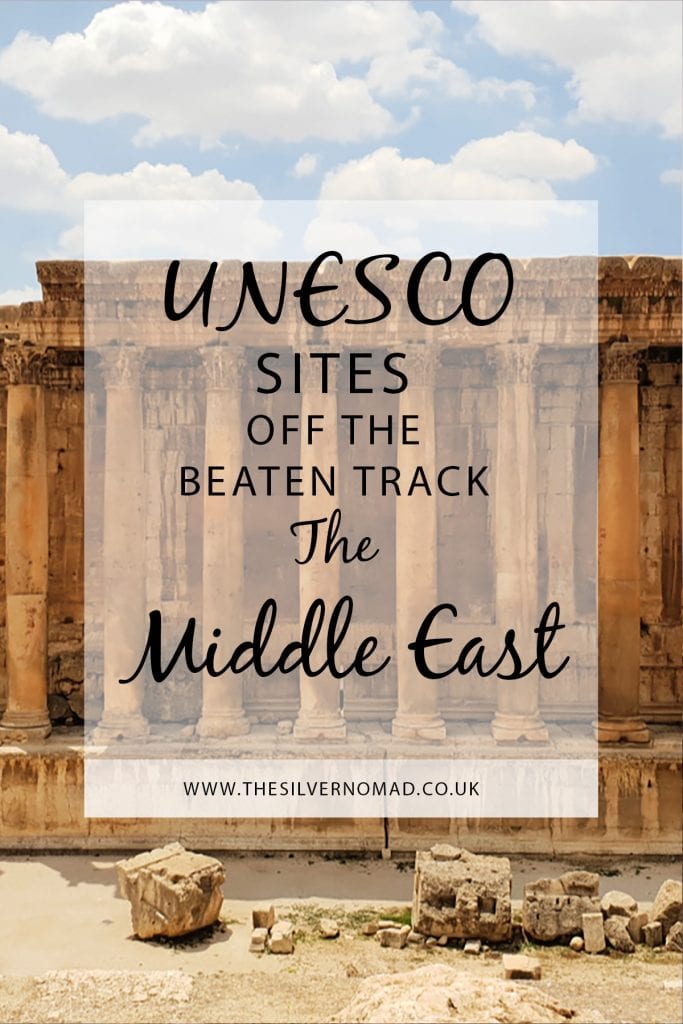

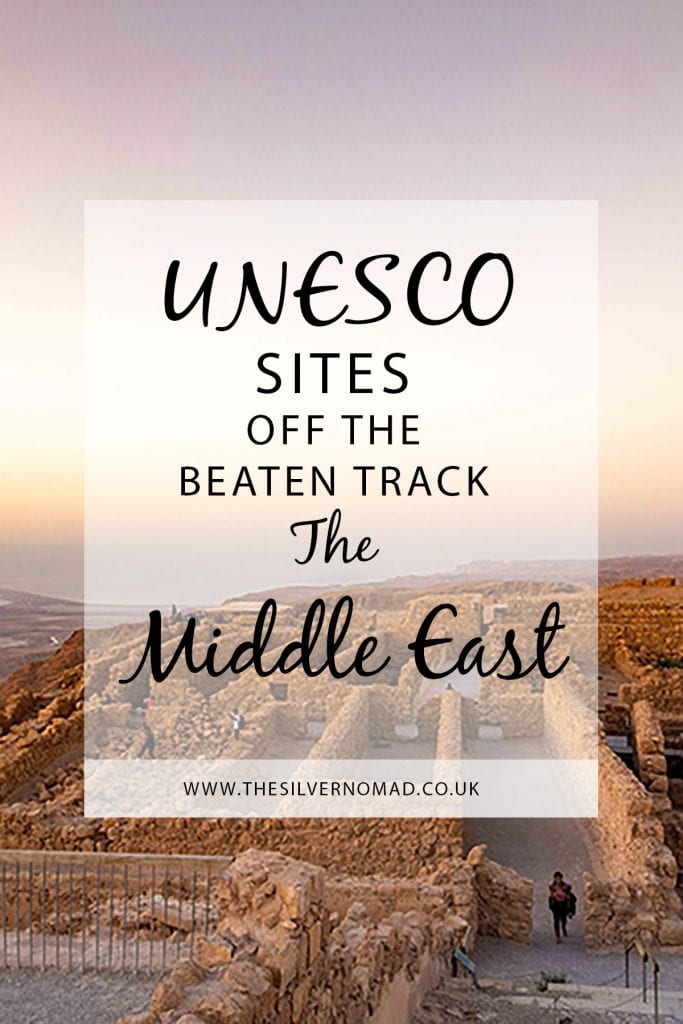


Thank you so much for having us with so many other brilliant travelling tips.
Thank you, I am glad you enjoyed it.
Nice post! The information you provided is very helpful if someone is planning to enjoy the holidays.
Thank you!
These are so beautiful and I love that they are well preserved. Petra is so on my list to visit soon.
I have added them all to my list, boy am I going to be busy!
Really loved your collaboration with other writers with the compilation of the lesser unknown- it makes for the best discoveries! Found some new places to go:)
Great Stefanie, there are so many to discover, I can’t wait to visit the Middle East and see some of them.
I’ve visited two of these in Jordan but would love to see more of the other sites – some of which I hadn’t heard of. Thanks for the nod 🙂
My pleasure Suzanne, it is always inspiring to hear of new places to visit!
Such a beautiful post. I’ve never heard about at least half of them so that’s helpful. How about adding Acre or Akko in Israel to the list? A town in the north of Israel with lots of history behind it…
Hi Maya, I would love to add them, but I need someone to write them!
I’ve been lucky enough to visit a few of these but now I have a few more for my list 🙂
I have added them all to my bucket list!